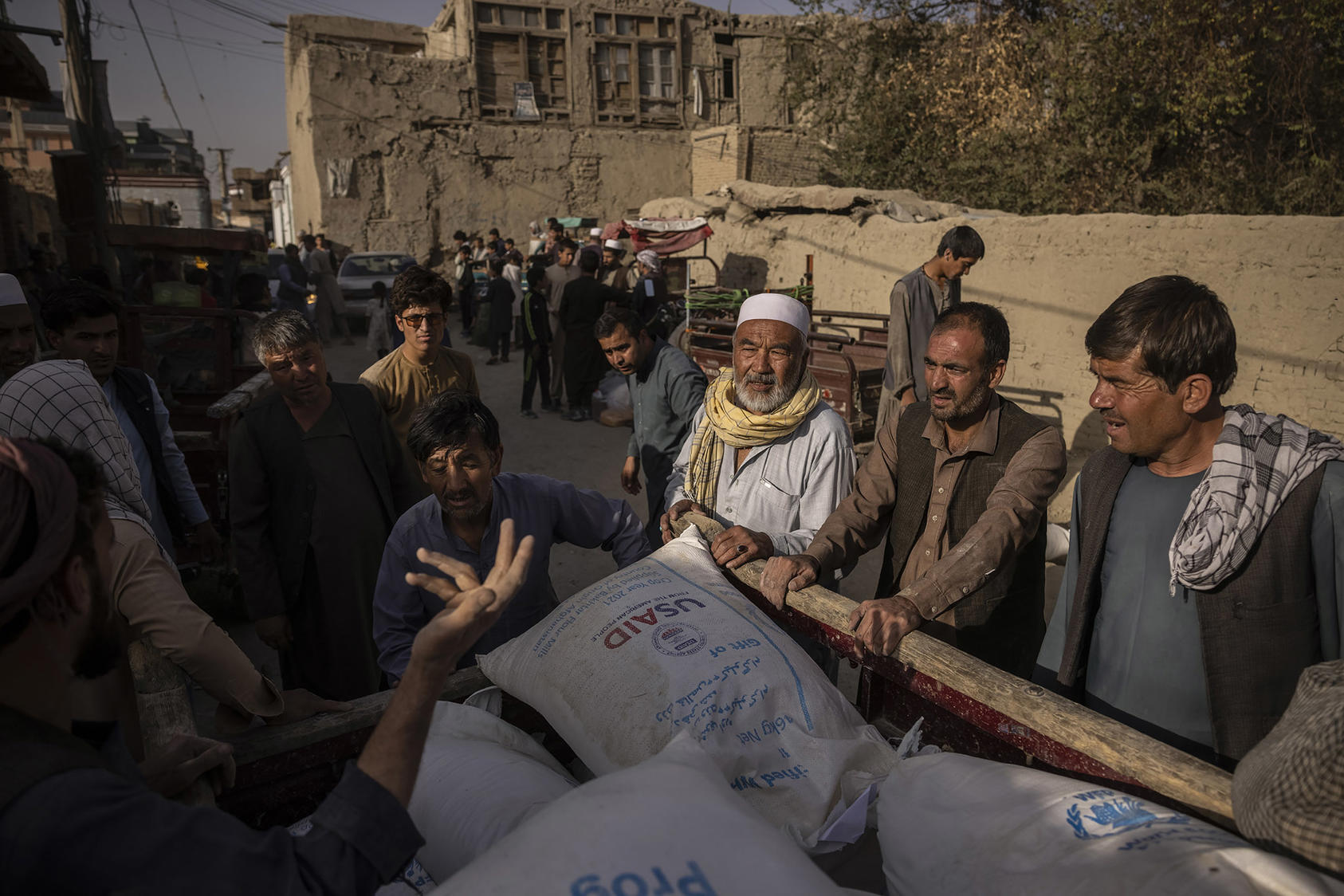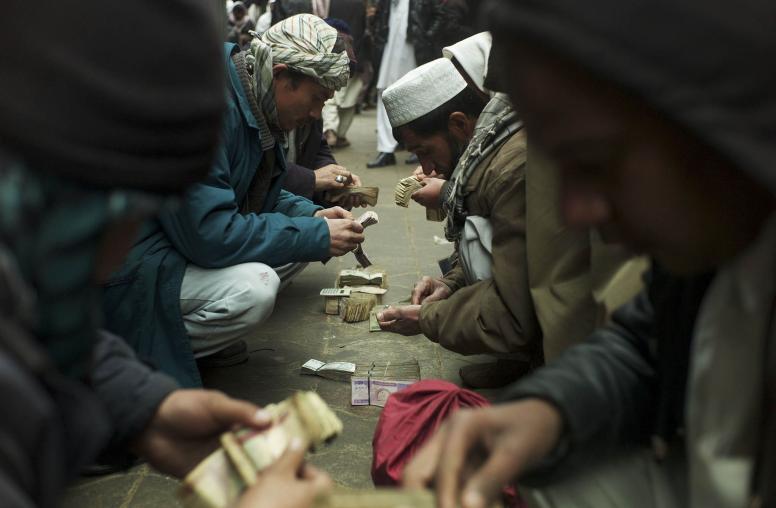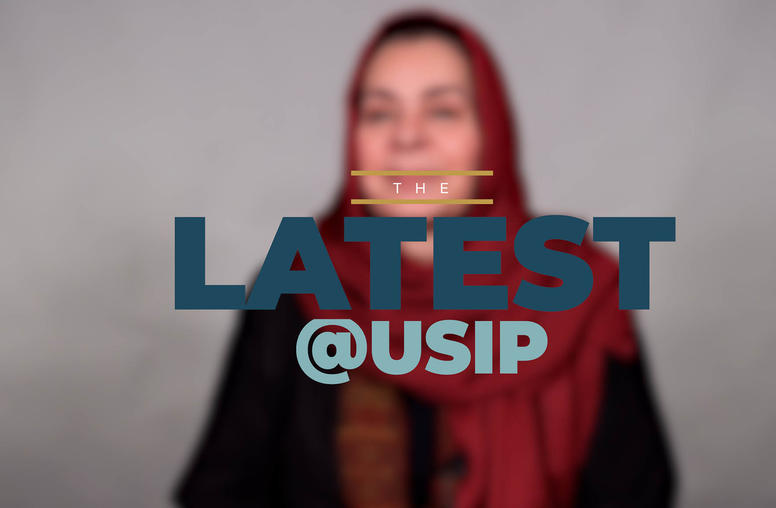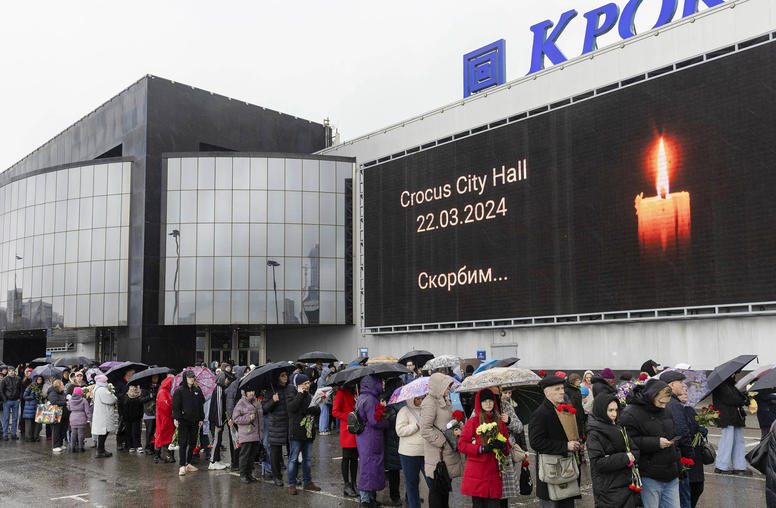Afghanistan’s Economic and Humanitarian Crises Turn Dire
Pledged aid is critical to reducing starvation but will not be enough to offset the economic shock facing the country.
Two months after the Taliban took control of Afghanistan, the country is grappling with twin economic and humanitarian crises the response to which has been complicated by international aid cutoffs, the freezing of Afghanistan’s foreign exchange reserves and sanctions on the militants. USIP’s William Byrd discusses the implications of these crises and the challenges to alleviating them.

How dire is the economic and humanitarian situation in Afghanistan?
Afghanistan’s economy was already suffering from very slow growth, high and increasing joblessness, deep poverty affecting around half of the population, poor governance, pervasive corruption and, not least, COVID-19 and drought. The country has now been hit by one of the largest economic shocks in global experience — both in its magnitude (past aid, now almost entirely cut off, amounted to $8 billion per year and equivalent to 40 percent of GDP) and in the speed with which the economic collapse is unfolding, in a manner of months not years. This kind of shock would be impossible for any country to navigate successfully, but Afghanistan is extremely vulnerable due to its preexisting economic problems; already widespread poverty, hunger and malnutrition; and the unexpectedly quick Taliban takeover and consequent loss of government managers and professionals. Moreover, the freezing of the country’s foreign exchange reserves and its loss of access to Afghanistan’s quota of International Monetary Fund (IMF) funding take away key macroeconomic tools to manage the exchange rate and deprive the Afghan banking system of liquidity, so it is on the verge of collapse.
In addition to the purely economic impacts of the shock, the aid cutoff is devastating social services in Afghanistan, one of the success stories in the country over the past 20 years. Basic health services, previously funded entirely by donors’ development programs, are collapsing, with health facilities running out of medical supplies and health workers going unpaid for several months already. Education, a more controversial sector than health vis-à-vis the Taliban over girls’ schooling and curriculum issues, is suffering greatly, with hundreds of thousands of teachers (who are civil servants in Afghanistan’s education system) — many of whom are women — not getting paid due to a lack of funds in the Afghan budget.
The impact of the aid cutoff, freezing of Afghanistan’s foreign exchange reserves and other sanctions-related measures will be felt disproportionately by the country’s large and growing urban population — civil servants and their families, the urban poor, the urban private sector and, in particular, urban women and girls. So, parts of the population that are already more vulnerable to Taliban actions against them are likely also to be especially badly affected by the economic and humanitarian crisis.
As the looming economic and humanitarian catastrophe unfolds, the needs for life-saving humanitarian aid will multiply, with livelihoods collapsing, widespread hunger and increasing displacement and movements of people in response to privation.
What are the implications of this challenge for the United States and the region?
The most dire implications unfortunately will be for the Afghan people themselves, with risks of outright starvation — something which did not materialize on a widespread scale during the more than 40 previous years of protracted conflict.
For the region, pressures will build from desperate Afghans trying to move to neighboring countries, especially Pakistan and Iran, as well as farther afield. As the situation in-country continues to deteriorate, the refugee crisis and people smuggling will worsen. Neighboring countries will face the dilemma of whether to let in significant numbers of Afghan refugees and outmigrants — which would save lives and facilitate U.N. support to them in those countries — or trying to prevent such people flows, which will not stem them entirely but will increase human suffering and deaths within Afghanistan.
For the United States, one implication is greatly increased humanitarian aid requirements, which the United States will feel obliged to contribute to. There will also be challenging trade-offs between efforts in this regard and other U.S. objectives such as counterterrorism, sanctions observance and the like. Even more important than the level of U.S. assistance will be flexibility in relation to sanctions and the asset freeze to facilitate aid getting delivered to those in need within Afghanistan.
What is the relationship between humanitarian assistance and the overall economy? Will pledges from the G-20 and the U.N. humanitarian appeal be enough to avert the worst humanitarian consequences?
Humanitarian aid will be essential to reduce hunger and starvation but will not come anywhere close to offsetting the huge economic shock Afghanistan is suffering from. We have to remember that in the past, the country was receiving something around $600 million to $700 million of aid per month, so the $1.2 billion pledged in September in response to the U.N. humanitarian appeal, and the further $1.15 billion pledged by the European Union at the recent G-20 meeting, simply will not cut it. Moreover, aid pledges for Afghanistan have not fully translated into actual receipt and delivery of aid in the past, and reportedly less than half of the $1.2 billion pledged in September has materialized in the form of cash in the bank for the United Nations.
How do anti-Taliban sanctions and frozen central bank reserves affect aid delivery? Is it possible to provide humanitarian and development assistance without removing U.S. sanctions?
Beyond how much money is made available by the aid community, bringing the assistance into the country and delivering it to the people most in need will be crucial. This is complicated by the sanctions, but it will be possible to deliver essential aid without recognizing the Taliban government or abolishing sanctions. What is required is an approach characterized by informed risk tolerance (i.e., risk management) as opposed to knee-jerk risk avoidance, combined with flexible and proactive approaches to get around implementation obstacles and constraints as they arise. The risk that some part of assistance may inadvertently get diverted to the Taliban must be weighed against the risks for Afghanistan and to U.S. interests from not enabling aid to be delivered and mitigating the economic and humanitarian crisis. For example, the U.S. Treasury has already determined that personal remittances from Afghans and others outside the country to relatives and other Afghans in need are important to maintain and carry a minimal risk of such funds being diverted to the Taliban.
The U.S. Treasury has opened the door to exempting life-saving humanitarian assistance and other support for basic human needs from sanctions, and what is needed now is further flexibility and actions to allow aid for these purposes to actually be delivered.



